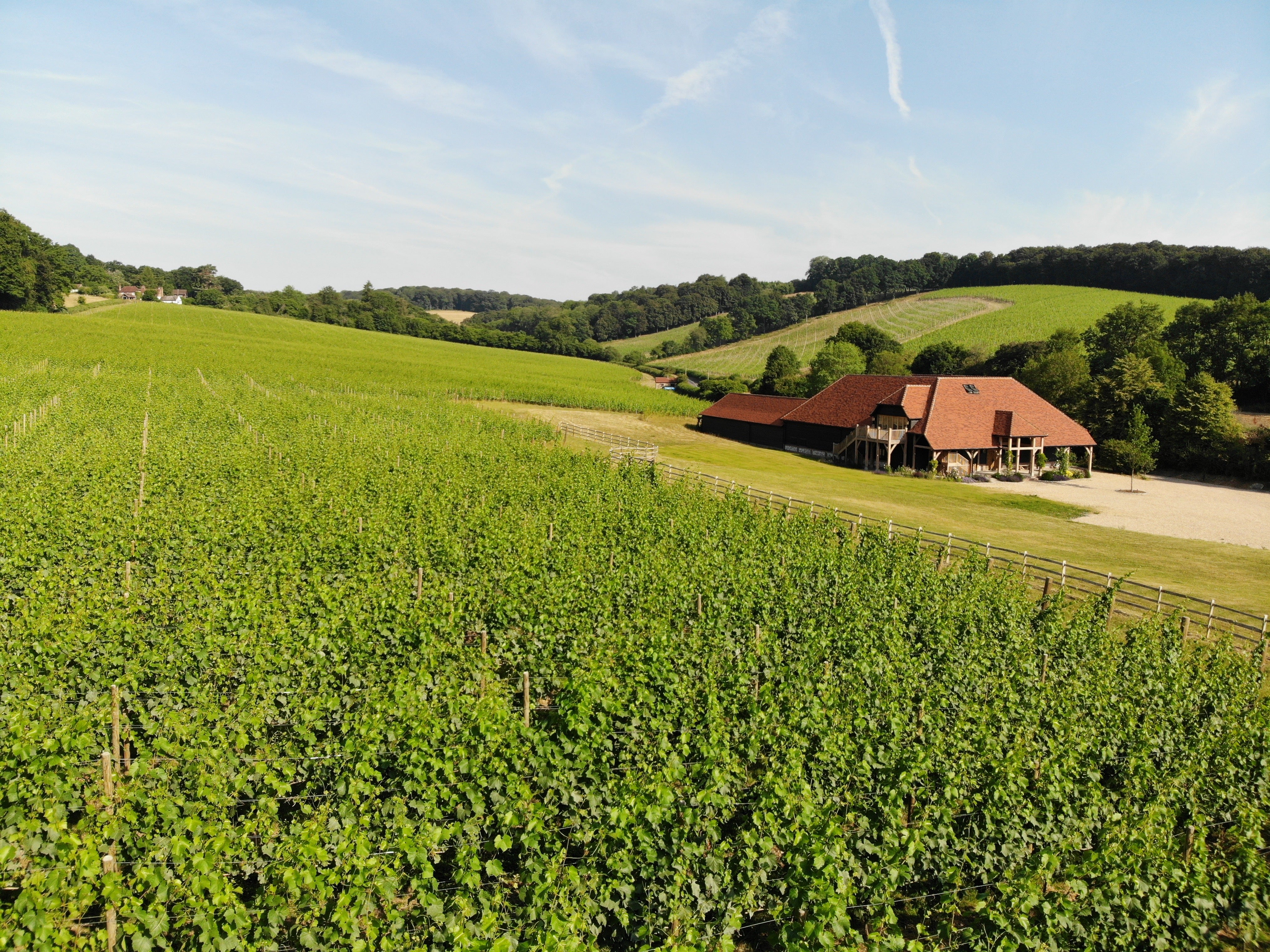An English couple’s long quest for the perfect site in Oxfordshire finally ended at an English version of the Côte de Blancs.
When Stephen and Fiona Duckett set out to find the perfect English vineyard site, they didn’t know their quest was going to take three years, span over 300 sites, and involve detailed analytics at 100 different plots of land.
By the time it was finished they were looking at a climate that was not just warming but warmed – average temperatures having risen in this part of the world by a beneficial (for UK grape growers) 0.9˚C. Stephen’s farming instincts had told him all along that finding the perfect vineyards for Pinot Noir and Chardonnay was possible, and in this corner of Oxfordshire they proved to be right.
Guiding the Ducketts’ research was Dr Michel Salgues of California’s Roederer Estate, which is famed for its sparkling wine production in the Anderson Valley, himself a Champenois and an expert in the critical matter of finding Champagne-like terroir away from Champagne.
“Michel loved it here,” Duckett said, “He was excited to find new top-quality vineyards.” Salgues told the Ducketts they would be able to grow Pinot Noir and Chardonnay, and moreover they would know exactly which clones to use because the soils were so similar to those of the Côte de Blancs.
The site the Ducketts settled on in the old Oxfordshire Pyrton Hundred, the site of an ancient medieval settlement, sits comfortably at the head of the Stonor Valley, nestled in a protective amphitheatre of chalk that runs almost 160m deep.

Head northwest out of Henley-on-Thames and the climb towards this special site starts gently, at a barely perceptible 0.1 percent gradient, then steepens steadily for a further 12km until it reaches a leg-aching 15 percent. This stretch is revered by local cyclists for being the longest unbroken hill-climb in the UK.
The Ducketts love it too, for three reasons. Over the lip at the top of the valley lies the Aylesbury Plain from which warm air spills in a steady stream that makes its way down towards Henley. As it flows, it dispels frosts in the winter, clears the air of mildew as the grapes form in the spring, and brings warm air that allows the grapes to ripen evenly over the summer months. In terms of frost and mildew alone, this puts the pair at a huge advantage over other English wine producers.
The damp summer of 2014, when the team planted the first 42 acres (17ha) of vines, meant that the new plants could establish themselves without irrigation. Then, in another stroke of much less obvious luck, the fierce drought of 2018 forced the young vine roots to dig down, seeking water and minerals. Five years later they’re anchored at an advantageous (and nutritious) 10 metres.
There’s been good judgement too: planting the Pinot vines facing east, rather than the conventional south, means they get three to four hours extra sunshine each morning.
The grapes are fermented and bottled by parcel, then their origins are clearly highlighted on a small map, neatly placed at the top of each back label. Each vintage is bottled separately too: ‘Every year is different, and I want to be tasting wines which each have their own story,’ Duckett says.

Three Rousseau fermenters
Although their characteristics are undoubtedly made in the vineyard, these wines are physically brought to life in a trio of 22-hectolitre Rousseau fermenters in a handsome green-oak winery surrounded by the woodland-and-pasture beauty of the Stonor countryside and Fiona’s lawns of natural wildflowers. It’s a building of timbered splendour which would look as snug in Sonoma as it does among the Chiltern Hills.
Preamble No 2 (75% Pinot Noir, 25% Chardonnay) is late-harvested, which contributes to its mellow apricot and peach-skin aromas and biscuity warm palate; this wine will be released in 2026. The 2019 Blanc de Blancs with its lively, persistently tangy honeydew and lemon palate, comes solely from the estate’s steepest 30-degree slopes, and the 2018 Rosé Signature (75% Pinot Noir) has a fresh ‘Englishness’ to it, with smooth berry fruits and a brisk thread of minerality. The punchy Blanc de Noirs 2019 (Pinot Noir) has macerated strawberry notes and a hint of zesty clementine; this wine sees no oak, but gains richness from 30 months on lees and a full malolactic fermentation.
All of these wines show the ripeness of flavour, clarity and pristine focus we look forward to in top UK sparkling wines. An expectation of more to come, hinted nuances and an intensity that promises to open out into a great future.




